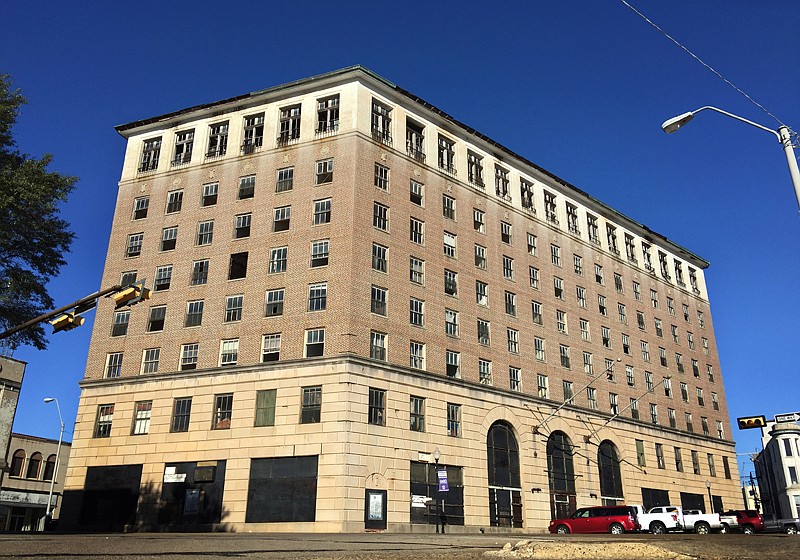The Texarkana, Texas, City Council has given its final go-ahead to renovate the Hotel Grim, voting to approve more than $2 million in loans to project's developer.
The vote at Monday's council meeting culminated years of work by city planners and developer Jim Sari to piece together means of financing the project, expected to cost about $20 million.
Members of the audience applauded as the council voted to authorize the loans made possible by the Environmental Protection Agency and the Department of Housing and Urban Development.
"A lot of time and effort, a lot of blood, sweat and tears have been put into this project," Mayor Bob Bruggeman said. "This is an exciting day. This is sort of an historic day in our community. This has been going on for a long time. A lot of people gave up hope, but this is going to be a jewel in our community."
Before the vote, Ward 3 Councilmember Betty Williams read a statement in support of the project.
"The Grim Hotel still captures the hearts of most in Texarkana," she said, adding that she appreciates "all those who have steadfastly moved forward to make this new day for the Grim Hotel a reality. It's certainly taken a village to get where we are tonight."
Sale of the hotel to Sari is expected to close by the end of the year, and construction could begin in early 2018, said David Orr, city director of planning and community development.
The Grim will be converted into 98 affordable-rate apartments with commercial space on the ground floor. Making all the units affordable makes the project eligible for a 4 percent federal tax credit and additional financing through state-issued bonds.
Sari also has announced plans to convert the former Sears store at 301 Pine St. into 20 to 25 market-rate apartments and the Harrell Building at 317 N. State Line Ave., formerly known as the Rialto and the Medical Arts Building, into office space.
The city helped secure three layers of the hotel project's financing: the HUD and EPA loans and more than $4 million in historic tax credits.
HUD has approved more than $1.4 million in loan guarantees through its Community Development Block Grant Section 108 program. The program makes available five times the amount of the city's annual CDBG allocation to lend for development, and at low interest rates.
The city's EPA Revolving Loan Fund is making $650,000 available to the Grim's developers. The fund is a sum granted to the city by the EPA to clean up contaminated sites, and it contains $780,000.
An application, prepared by local historian Beverly Rowe and submitted by the city, earned the Grim a place on the National Register of Historic Places in May 2015. As a result, developers are eligible for $2.4 million in Texas historic preservation tax credits and $1.8 million in federal historic tax credits.
The overall project cost is estimated at $20 million, with $12 million to $13 million in construction costs. Together, the three buildings' renovations will add about 118 residential units and more than 12,000 square feet of new retail and office space downtown.
Named after Texarkana banking, railroad and timber magnate William Rhoads Grim, the hotel opened in 1925, according to a history Rowe wrote for the Gazette in 2006. Construction cost was nearly $1 million, and the 250-room hotel was luxuriously appointed in marble and other elegant decor.
The hotel's last residents left in 1990, and the abandoned building has deteriorated since.
On Twitter: @RealKarlRichter

